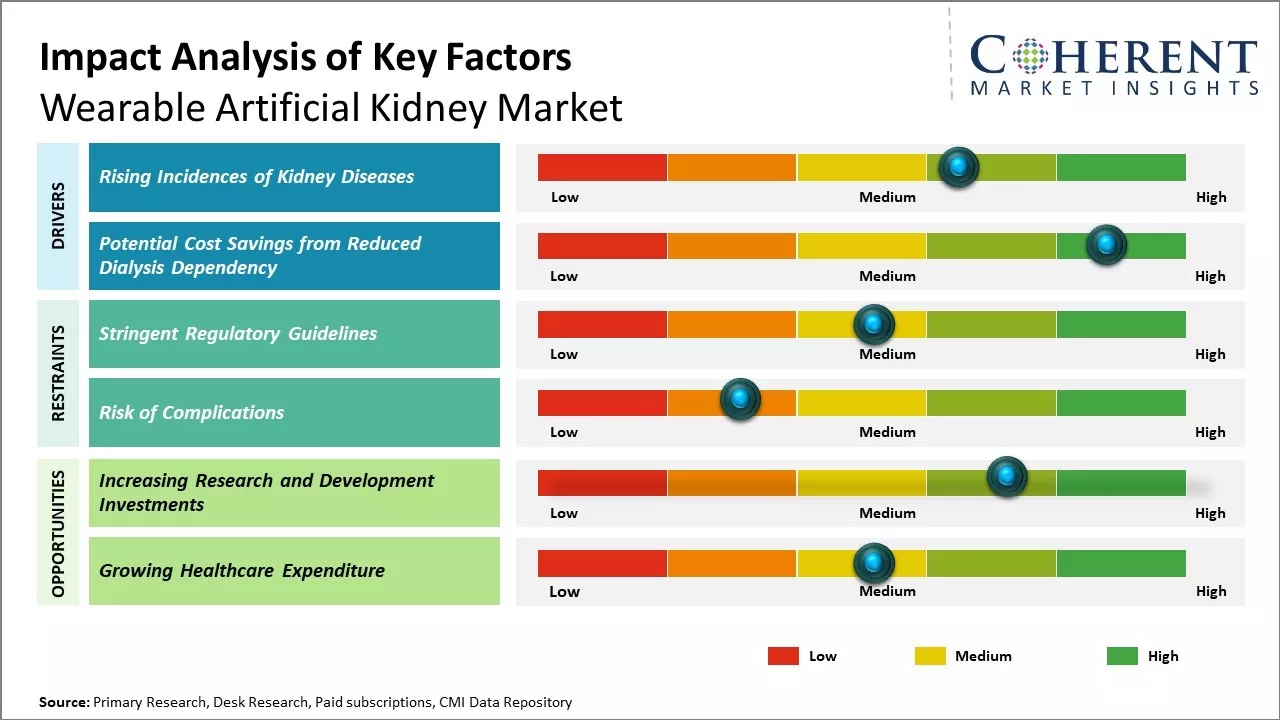Global wearable artificial kidney market is estimated to be valued at USD 10.39 Bn in 2025 and is expected to reach USD 26.01 Bn by 2032, exhibiting a compound annual growth rate (CAGR) of 14.0% from 2025 to 2032.

To learn more about this report, Request sample copy
Conventional dialysis requires patients to remain immobile during treatment, thus, negatively impacting quality of life. Wearable artificial kidneys could allow for portability and mobility, enabling dialysis to be administered at home or anywhere. This flexibility may address issues like long wait times for transplants by providing an alternative treatment option. As technology improves, wearable devices may meet the growing demand for kidney replacement therapies.
Market Driver – Rising Incidences of Kidney Diseases
Due to rising prevalence of chronic diseases such as diabetes and hypertension across both developed and developing nations, there has been rise in the incidences of kidney diseases as well. These chronic diseases are primary causes of end-stage renal diseases (ESRD), commonly known as kidney failure, where the kidneys permanently and severely lose their ability to function. According to estimates, approximately 750,000 patients suffer from ESRD globally, and the numbers are steadily increasing every year. Conventional treatment for ESRD involves costly kidney dialysis or kidney transplant, both of which have significant limitations and risks. While dialysis is a lifelong dependency for patients, transplant options are scarce due to lack of availability of donor kidneys. A wearable artificial kidney can potentially revolutionize the treatment landscape by offering patients an alternative which does not require dialysis or transplants. It would mimic the filtration functions of natural kidneys and allow continuous blood filtration outside of hospital settings. This could help to overcome limitations of current options and improve quality of life of ESRD patients. As the number of underlying reasons increases, there is an increasing demand for a workable therapy substitute. Wearable artificial kidney could witness strong demand in the coming years due to growing prevalence of kidney failure patient pool worldwide.
Joining thousands of companies around the world committed to making the Excellent Business Solutions.
View All Our Clients